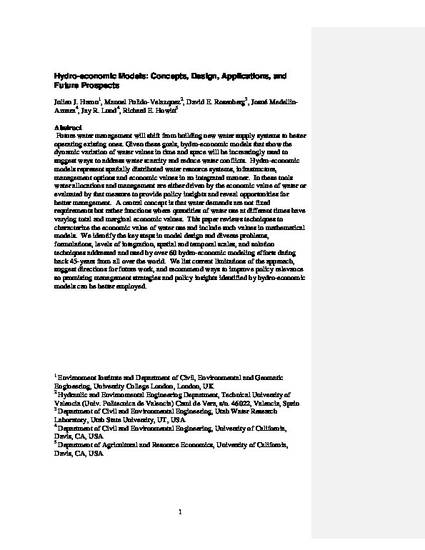
Future water management will shift from building new water supply systems to better operating existing ones. The variation of water values in time and space will increasingly motivate efforts to address water scarcity and reduce water conflicts. Hydro-economic models represent spatially distributed water resource systems, infrastructure, management options and economic values in an integrated manner. In these tools water allocations and management are either driven by the economic value of water or economically evaluated to provide policy insights and reveal opportunities for better management. A central concept is that water demands are not fixed requirements but rather functions where quantities of water use at different times have varying total and marginal economic values. This paper reviews techniques to characterize the economic value of water use and include such values in mathematical models. We identify the key steps in model design and diverse problems, formulations, levels of integration, spatial and temporal scales, and solution techniques addressed and used by over 80 hydro-economic modeling efforts dating back 45-years from 23 countries. We list current limitations of the approach, suggest directions for future work, and recommend ways to improve policy relevance.
